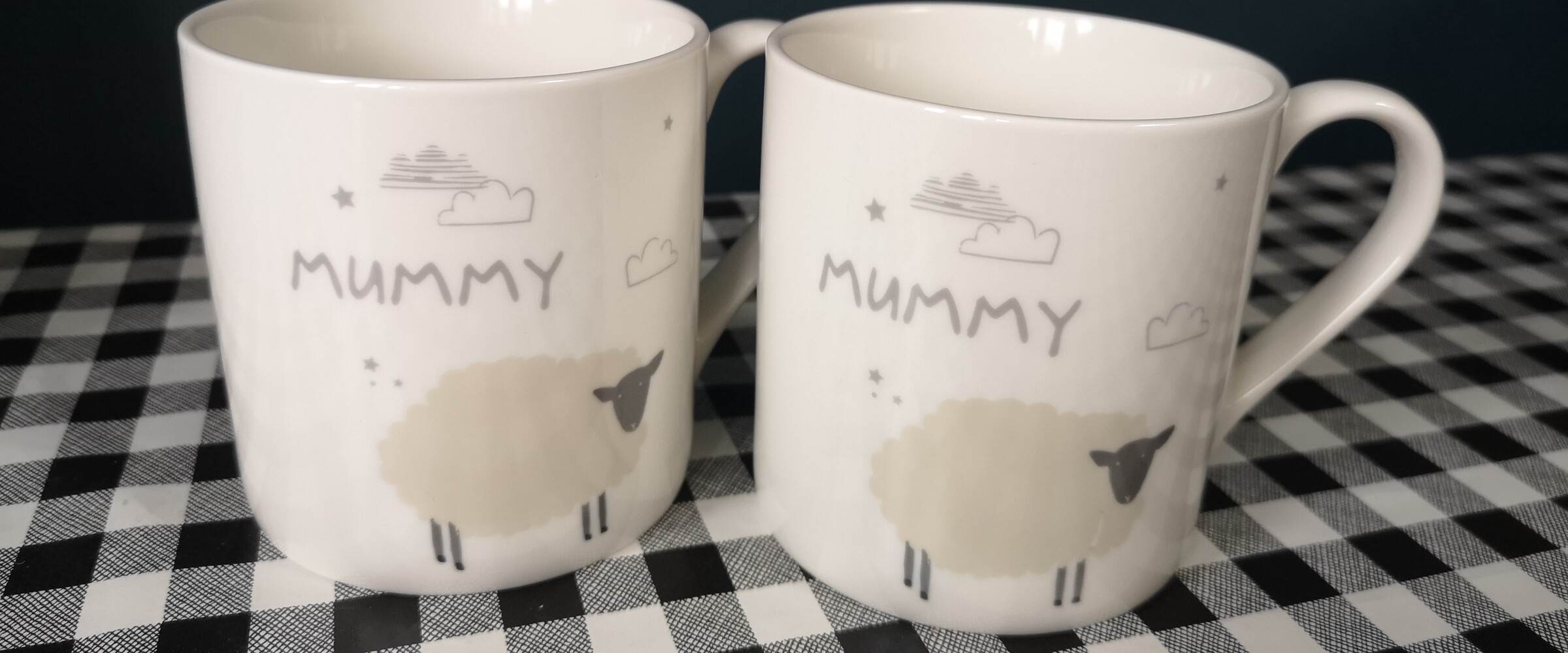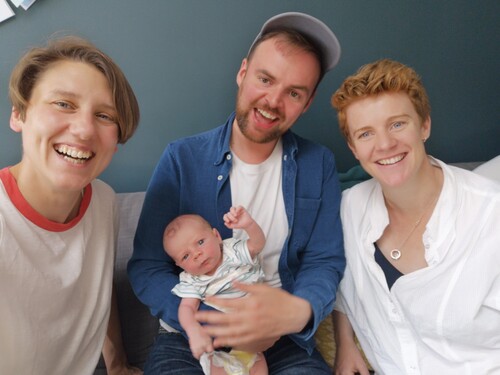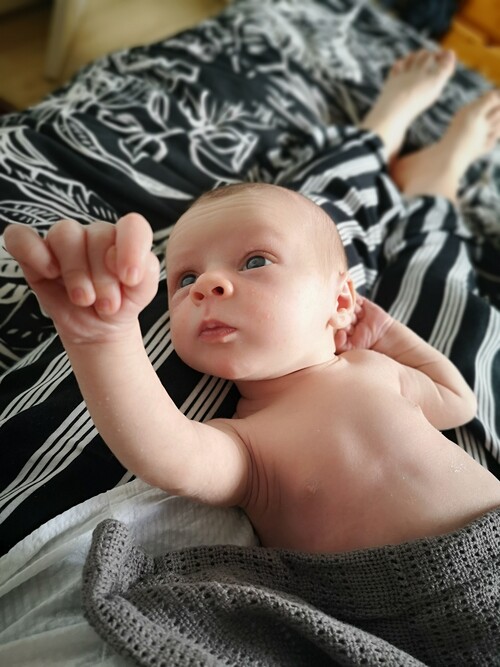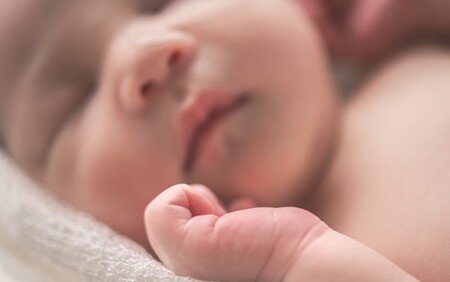
Patient Story: Having a child as a same sex family
My partner and I had always talked about having a family, but just as with getting married before same-sex unions were legalized, it had felt more like a dream rather than an actual possibility. However, with the increased visibility of gay families, as well as adoption agencies and fertility clinics reaching out and tailoring services towards the LGBTQ+ community, it began to feel like it could be a reality. So in 2016, both aged 33, we began to talk about starting a family properly.
The first stage involved a series of very big seeming decisions: would we adopt or try and conceive? If we were to conceive would we use an anonymous or known donor? Which one of us would carry? What method would we use? And so on. Some decisions were easy for us – I had always wanted to carry a baby and give birth while my wife had not. As for the donor, it was important to us that our child would know their father from birth and be able to form a relationship. We’d always joked with one of our gay male friends about starting a big queer family but it was hard to know how they would respond to a real-life proposition. My partner and I agonized about the best way to approach him – a letter felt too formal, a phone call felt too face threatening, we lived too far away from each other to manage it face to face, and so we opted for a text message whilst worrying that it would appear slightly throw away. We spent the weekend composing it and on Sunday morning, while perched either side of the landing at the top of the stairs, we hit send. True to form, he replied almost immediately – yes he was happy and willing but had a number of questions before he committed.
The questions he had were detailed and, to our embarrassment, things we hadn’t given a lot of thought to. For instance, who would be on the birth certificate? What would his relationship be to any child conceived? Could we formally guarantee that he wouldn’t be financially responsible? What would happen if we split up? What would happen if one of us died? What would happen if both of us died? How many grandparents would the child have? In going through the questions we realized that, as many of them had serious consequences, it might be worth formalizing our wishes in a document. We’d heard of preconception agreements and we set to work drawing ours up. Once signed and sealed, we got down to the more challenging aspects of starting a family – trying to conceive.
For our first attempts we tried home inseminations using a Stonewall published guide for lesbians who were trying to get pregnant. It was all kinds of funny and awkward but ultimately unsuccessful. During the process I had had suspicions that something wasn’t quite right with my own reproductive health. My periods had always been slightly irregular – longer and shorter cycles and when it came to tracking my ovulation using my temperature, I wasn’t registering the tell-tale dips and peaks that indicate when your hormones are rising and falling. I decided to get my hormones checked out with my GP. Initially, the doctor wasn’t entirely happy to submit me for a blood test as we weren’t a straight couple – just one example of the many barriers faced by LGBTQ+ people trying to conceive - but with some gentle persuasion he agreed. The results weren’t encouraging; the blood tests were also not showing the hormonal surges associated with typical ovulation. It was worrying to discover and made us realize that we might need some extra help in trying to get pregnant and decided to move our efforts to a clinic.
We picked our first clinic based on the recommendation of a friend who had had treatment. The initial consultation involved a transvaginal scan which revealed that I had Polycystic Ovary Syndrome (PCOS) which, as I suspected, can mean that you do not release eggs as regularly as someone without the condition. The news felt scary but the clinic reassured us that it wasn’t a serious obstacle to conceiving, I just might need to support the process with some hormonal therapy. At this point we were faced with the decision of which method we would use IUI, or IVF. IUI, Interuterine Insemination, involves tracking a person’s ovulation and then inserting washed and concentrated sperm from the donor using a catheter at the optimal point in the cycle. IVF, In Vitro Fertilization, is when the eggs are extracted, fertilized with sperm, and then transferred back to the womb. Despite substantially lower success rates, we opted for a package that included three rounds of IUI as it much cheaper and is considered less invasive. At this point we were still feeling fairly optimistic - it felt like we were taking positive strides in starting treatment at the clinic. The optimism began to dry up after all three attempts, one natural and two medicated, were unsuccessful and with no explanation beyond bad luck. At this point I felt at my lowest ebb, balancing work and the treatment, long drives to and from the clinic, the mood swings associated with the fertility medication, and the devastating disappointment with each unsuccessful try felt too much. This time also seemed to coincide with a raft of our friends getting pregnant and gleefully sharing that it happened on the first try (tip: don’t do this, especially to your friends undergoing fertility treatment, it feels pretty crap).
Following this, for the sake of our mental health, and financially, my partner and I decided to take a break from the clinic. We booked a holiday and allowed ourselves some time to reconnect and enjoy life without obsessing over getting pregnant. After a few months we took stock of the situation, by this point it was 2019, somehow we had been trying for three years! On reflection, we both felt like we had it in us to give it another go but that we would switch clinics to one that was closer to home. We found out about an open evening held at Complete which was specifically targeted at LGBTQ+ couples. It felt nerve-wracking going to the evening, especially as we knew what we were opening ourselves up to again, but the session was fantastic. The information was accessible and comprehensive, and one of the fertility consultants made time for a quick private chat about our situation so far and how we could transfer our donor’s sperm from the original clinic to Complete. We also respected the way that the clinic didn’t sugarcoat the fact that the treatment was not available to us as a gay couple on the NHS but in response to this had a number of ways to make it more affordable. There were packages, discounts for signing up in January and after the open evening, and a 0% finance plan which allowed you to spread the price of treatment across the year for no extra cost. Being the shrewd (and broke) lesbians that we are, we took advantage of every single one.
In January 2020 we had our first full consultation. The level of professionalism and care was outstanding, we instantly felt like the treatment was being tailored to my specific fertility profile and that the clinic was going to considerable lengths to ensure we were fully informed (they gave us hours of homework!) The contrast between this and the care and advice we had received from the original clinic was stark to say the least. For this round, and with the help from the financing, we decided to go for IVF this time. Once all the checks and scans had been carried out we were booked in and gearing up for our first cycle in March 2020, and then Covid hit and with it the first lockdown was imposed. Like most of the world, the clinic had to temporarily close. However, Complete kept in regular contact and before too long they were operating in a Covid-safe way. By the early summer we were back at the scans and had ordered the drugs in preparation for the start of the egg collection phase of our IVF.
My partner was fantastic at administering the shots needed to stimulate my ovaries to produce the eggs for retrieval and the early scans showed I was responding positively. As the treatment went on, however, I started to feel more uncomfortable, my abdomen felt tender and swollen and one of the later scans revealed that the drugs had almost been too effective and my ovaries were overstimulated – most likely down to my having PCOS. This isn’t necessarily a problem in the long run, but it did mean that I could not have an embryo transferred in the same cycle as the egg retrieval. Instead, I would need to have any embryos frozen while my ovaries were given some time to calm down. It was hard not to feel disappointed, with all the unsuccessful attempts and setbacks we had now been trying for four years. By the same turn, the process so far had taught us to be patient, if plan A fails, there’s plan B. We were on about plan X by now but that was fine, we had to just relax and follow the advice of the clinic.
In July 2020 I was booked for my egg retrieval. The procedure was a success – we managed to retrieve 30 eggs! While this was a much higher yield than hoped for, and was seriously good news, it came with some drawbacks too. The overstimulation I had started to feel in the build-up continued beyond the egg retrieval. Over the next few days I began to feel unwell – my stomach ballooned and I had trouble breathing, the hallmark symptoms of Ovarian Hyperstimulation Syndrome (OHSS). Although extremely rare, this is a known risk of IVF and one that Complete had made us aware of so we knew how to spot it. As such, we knew to get in touch with the clinic who advised I come in for an assessment. Once assessed it was determined that I had a moderate-severe case and it was best that I was admitted to hospital for treatment and monitoring. As Complete is a research based clinic housed within a hospital, this meant the clinic calling down to the relevant ward and I was taken down that day. It also meant that the fertility consultants from Complete could visit and advise on my treatment. Although this was a frightening part of the process, I felt very well taken care of and after two nights I was ready to go home. All the while the embryologists had been keeping us updated about the progress of our retrieved eggs – by the time I was discharged I knew I had 6 high-grade blastocysts on ice ready and waiting to be transferred when I was fully recovered.
Although this meant another imposed break, by this time we had been on the journey for such a long time a few more months didn’t seem to matter, plus we had the precious embryos so it made sense to wait until conditions were most favorable. In November 2020 I started the medication to support the transfer and, to the backing track of Amy Winehouse’s Rehab (which felt oddly fitting), we had the blastocyst inserted at the end of the month. After a familiar but no less stressful two-week wait we were stunned and astonished to have our first positive pregnancy test. The result was confirmed by Complete; initially by blood tests and later through scans. Nine and a half months later, we were thrilled and amazed to welcome Baby Shaun to the world. Naturally, the pregnancy and birth contained their own anxieties and challenges but I will leave these for another post. While there were many aspects of the journey that were difficult and testing, ultimately we feel so incredibly fortunate that we were able to start a family, and so incredibly grateful to all the support and care we received along the way.



